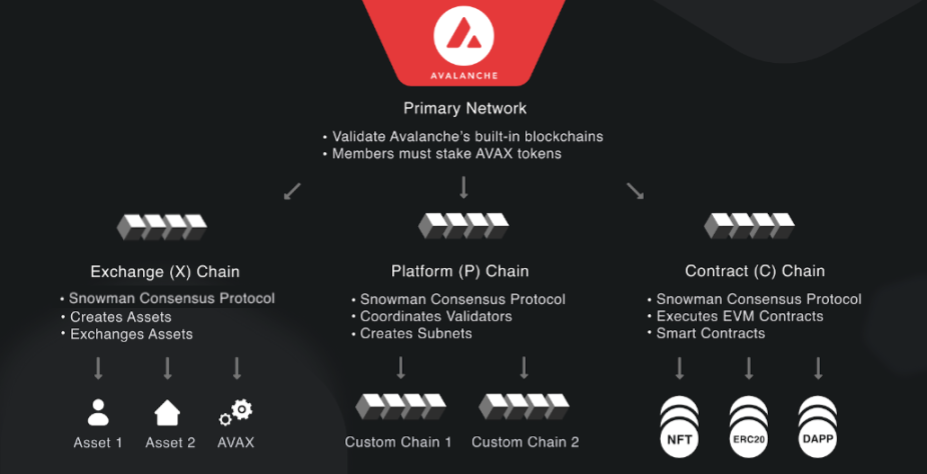The Primary Network
Avalanche is a heterogeneous network of blockchains. As opposed to homogeneous networks, where all applications reside in the same chain, heterogeneous networks allow separate chains to be created for different applications.
The Primary Network is a special Subnet that runs three blockchains:
Avalanche Mainnet is comprised of the Primary Network and all deployed Subnets.
A node can become a validator for the Primary Network by staking at least 2,000 AVAX.

The Chains
All validators of the Primary Network are required to validate and secure the following:
C-Chain
The C-Chain is an implementation of the Ethereum Virtual Machine (EVM). The C-Chain’s API supports Geth's API and supports the deployment and execution of smart contracts written in Solidity.
The C-Chain is an instance of the Coreth Virtual Machine.
P-Chain
The P-Chain is responsible for all validator and Subnet-level operations. The P-Chain API supports the creation of new blockchains and Subnets, the addition of validators to Subnets, staking operations, and other platform-level operations.
The P-Chain is an instance of the Platform Virtual Machine.
X-Chain
The X-Chain is responsible for operations on digital smart assets known as Avalanche Native Tokens. A smart asset is a representation of a real-world resource (for example, equity, or a bond) with sets of rules that govern its behavior, like "can’t be traded until tomorrow." The X-Chain API supports the creation and trade of Avalanche Native Tokens.
One asset traded on the X-Chain is AVAX. When you issue a transaction to a blockchain on Avalanche, you pay a fee denominated in AVAX.
The X-Chain is an instance of the Avalanche Virtual Machine (AVM).
Was this page helpful?